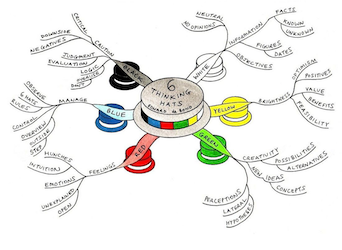
Introduction
Very often in business leaders fight so many fires and don’t give themselves the opportunity to think and act strategically. It is my humble opinion that senior managers are paid higher salaries because of their ability to think. So what happens if that skill is inhibited or impeded? Very obviously not only will the manager suffer but so will their business and their team. We only have to look at recent events in the world economy to see what happens when smart people stop thinking.
This exercise is simple and straightforward and is designed to help you to achieve clarity in your thinking. One of the main blocks to this clarity is the amount of information that we hold in our heads. This exercise helps you get a better perspective on your thoughts which should lead to actions that are thought through which will improve your own effectiveness and performance.
In addition to clarifying your thinking this exercise will help you to:· y
ou organize your thoughts·
clear space for creative thinking·
prioritise your thoughts·
get a better/different perspective·
improve your way of thinking·
reduce stressful thinking
The Brain Dump Exercise
Give yourself 30 minutes to start this exercise. You will come back to it on a regular basis. You will need three different coloured pens or pencils
- Get yourself a new reporters notepad and sit at your desk
- Ask yourself this question: “what’s on my mind in relation to my work” (this question can be changed to suit whatever may be blocking your thinking at any one time)
- What ever comes to your mind write it on a blank sheet of the reporters pad in one of the colours (keep this same color for each idea)
- Flip over the sheet and repeat steps 2-4 until you have everything that has been on your mind now on a blank sheet of paper. Don’t try and save paper by writing on the back – the rule is one idea to one sheet
- Find a clear space, a clear table for instance and rip out each of the sheets of paper.
Steps 6 to 11 are optional as they are to help you prioritise your thinking
6. Arrange each of these sheets of paper in order of importance.
7. Start with the least important item and with one other the other coloured pens write in the bottom right hand corner the number
1. Take the next least important item and write in the bottom right hand corner a 2. Repeat until all of the bits of paper have a number of the same color in the bottom right hand corner. They should now be numbered 1 to X where is the total number of bits of paper.
8. Now re-arrange the bits of paper in order of urgency.
9. Start with the least urgent item and with the remaining coloured pen write in the bottom left hand corner the number
1. Take the next least urgent item and write in the bottom right hand corner a 2. Repeat until all of the bits of paper have a number of the same color in the bottom left hand corner. They should now be numbered 1 to X where is the total number of bits of paper.
10. Now add up the two numbers.
11. Arrange the bits of paper in descending order (highest number to the lowest).
12. Starting with the piece of paper with the highest number, or whichever feels most important for you, write down what comes to you. This can be anything, a thought, a feeling, an action to take, whatever. If nothing comes then use de Bono’s six thinking hats. Simply ask yourself:
a. White hat: what are the facts and figures about this thought?
b. Red hat: what’s my intuition telling me about this idea?
c. Black hat: what are the difficulties/problems/challenges with this thought?
d. Yellow hat: what are the benefits/positive aspects of this thought?
e. Green hat: if I were to be creative about this, what would I say/do/feel/change?
f. (Optional, maybe not appropriate) Blue Hat: what’s my thinking about my thinking?
13. Once you have written down anything to do with that idea move onto the next idea.
14. Review the sheets either at the start or the end of the day or you can come back to this exercise whenever you want to add more thoughts to a particular idea or to start on an idea.
15. Keep the sheets of paper with you for the next few weeks and as your thoughts evolve maybe you will let go of some of these ideas because you have acted on them or maybe they no longer have any valid substance.Start to notice how much clearer your mind is becoming and how much more you are better able to structure your thinking. What other changes do you notice as you do this exercise?
Author: Mark BuchanArticle Source: EzineArticles.com
© 2011, ©Active Consultants 2011. All rights reserved. Copying in part or in entirety only permitted by written consent
Republished by Blog Post Promoter

